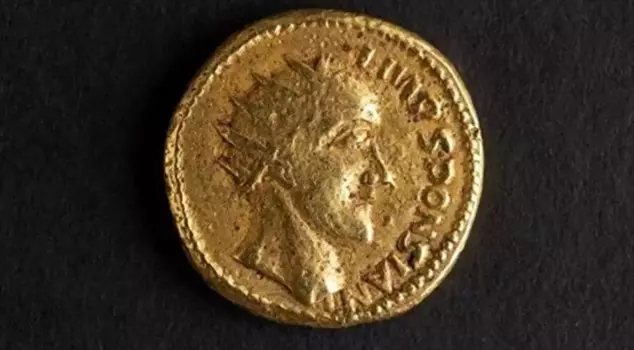
20.10.2025 17:40
The reality of the Roman Emperor Sponsian, long considered "fake," has been proven by gold coins found in Transylvania. Wear marks on the coins, which were deemed counterfeit and forgotten in the 18th century, indicate that they were indeed in circulation. The findings reveal that Sponsian was a real leader who ruled in Dacia during the crisis period in Rome.
Scientists have proven that the Roman Emperor Sponsian, long regarded as a fictional character by historians, was indeed a real ruler. Ancient gold coins found in Transylvania provided new insights into this "forgotten emperor" of the third century.
THE SOURCE OF A CENTURIES-OLD DEBATE: MYSTERIOUS COINS
Four gold coins bearing the name of Sponsian were discovered in the early 18th century in what is now Romania. However, experts of the time declared these coins "fake" due to the differences in craftsmanship and the deviation of the inscriptions from typical Roman coins. Since then, the coins were forgotten on dusty shelves in museum archives for hundreds of years.
RE-EXAMINED WITH NEW TECHNOLOGY
After three centuries, a team led by Prof. Dr. Paul Pearson, a scientist working at University College London, re-evaluated the coins under a microscope. Scratches and signs of wear on the surface revealed that these gold pieces had indeed changed hands and were part of the economic circulation of the time.
SCIENTIFIC EVIDENCE: A REAL EMPEROR
According to the research findings, the signs of use on the coins indicate that Sponsian was not just a legend, but a real ruler who lived during one of the complex periods of Roman history. Prof. Pearson stated, "We see that a figure long considered fake was actually a leader on the historical stage. Sponsian is now a legitimate name in the chronology of the Roman Empire."
A LEADER EMERGING IN A TIME OF CRISIS
According to experts, Sponsian took control in the province of Dacia on the northeastern border of the empire during the mid-third century, a time when the Roman Empire was shaken by civil wars and external threats. This region, which had lost its connection to the central government, was living under an independent military administration at that time. It is believed that Sponsian minted coins in his name in accordance with Roman tradition.
THE LOCATION OF THE DISCOVERY: TRANSYLVANIA
Archaeological studies conducted in the Transylvania region, which is now within the borders of Romania, support the accuracy of these findings. The emergence of the coins has opened a new window for historians on how local administrations formed during the tumultuous years of the Roman Empire.